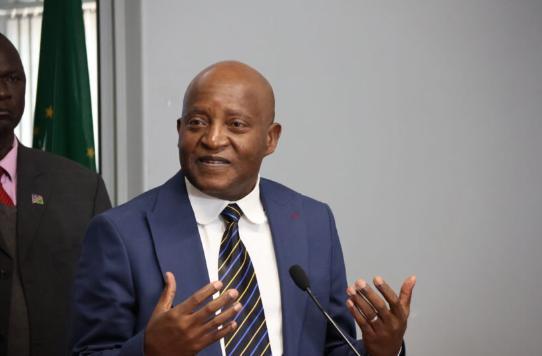Africa-Press – Namibia. The Office of the Prime Minister revealed that the government, through the ministry of agriculture, is implementing a flood and rainwater harvesting and irrigation development project.
Speaking in Parliament recently, Prime Minister Elijah Ngurare said this is to ensure that during the rainy season, water is harvested and stored in these earth dams.
Under this project, the construction and rehabilitation of earth dams is carried out.
“The ministry has a concept on floodwater harvesting and a draft strategy on integrated flood and drought management, which will address the flood risk and ensure water security at the national level,” he said.
The ministry of agriculture has, however, already constructed 42 earth dams since 2020.
These include 16 earth dams in Oshana, two earth dams in Hardap, three earth dams in Oshikoto, and 10 earth dams in Ohangwena.
With two earth dams in //Kharas, two earth dams in Omusati, three earth dams in Kunene and four earth dams in Kavango West.
Additionally, the PM stated the ministry has a standing project on the construction of earth dams and the modernisation of traditional wells and pans for livestock drinking.
Ngurare noted that the government, through the ministry, is aware of the importance of water harvesting aimed at water and food security.
“As such, the government has a long-term strategy for the construction of earth dams across the country, which is part of the sixth National Development Plan,” he added.
Namibia is home to four key flood-prone regions: The Cuvelai-Etosha Basin, the Fish River Catchment, the Okavango floodplains and the Zambezi River.
These reservoirs provide storage capacity and serve as crucial water sources for agriculture and domestic use.
On 8 April 2025, Popular Democratic Movement leader McHenry Venaani raised concerns, stating that the construction of earth dams is a critical strategy to capture and store water during the short rainy seasons.
“These dams provide an essential water supply during the dry months, particularly for rural communities dependent on agriculture and livestock farming, especially considering our erratic and unpredictable rainfall patterns. We face significant challenges related to water scarcity, particularly in rural and semi-rural areas,” he said at the time.
He added that floodwater-prone or ‘efundja’ areas, while offering potential for water storage, pose unique challenges.
The unpredictable nature of flooding in these areas introduces significant risks to the stability of these dams and the surrounding ecosystems.
However, no specific Environmental Impact Assessment has been conducted for the earth dams in floodwater-prone areas despite the Environmental Management Act suggesting otherwise.
All earth dams constructed by the ministry of agriculture have complied with the legal requirements relevant to the correct category.
Moreover, the OPM emphasised that no person may undertake any construction or activity that alters or is likely to alter the natural flow of water in, to, or from a watercourse, river, or channel without written approval from the minister.
Ngurare cautioned all individuals and entities intending to construct dams for private use to first seek approval from the responsible ministry.
This includes submitting detailed dam design information to assess the potential safety risks associated with the proposed structure.
For More News And Analysis About Namibia Follow Africa-Press






